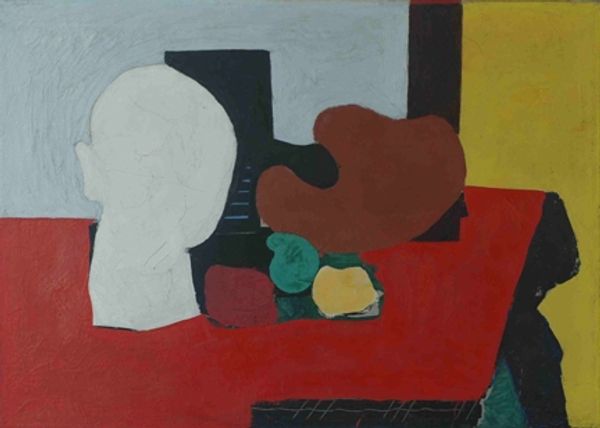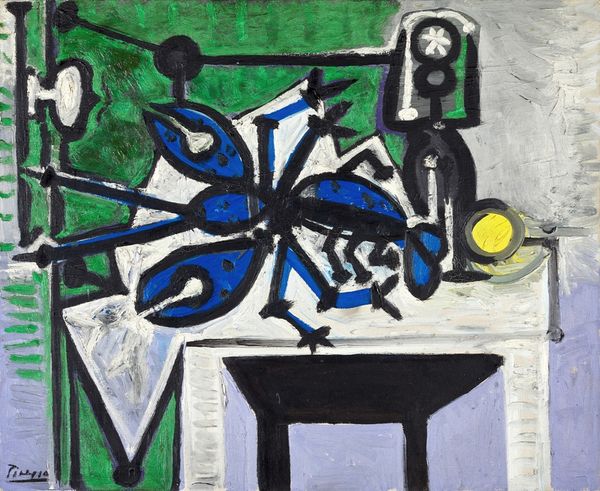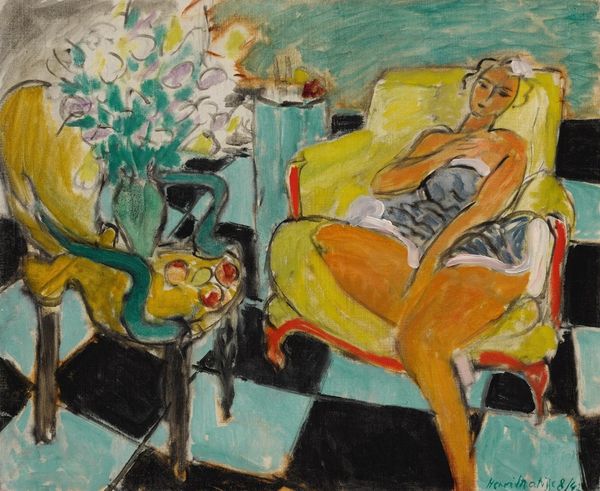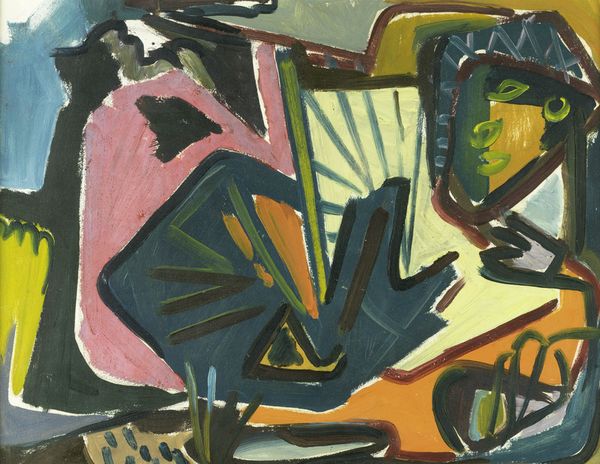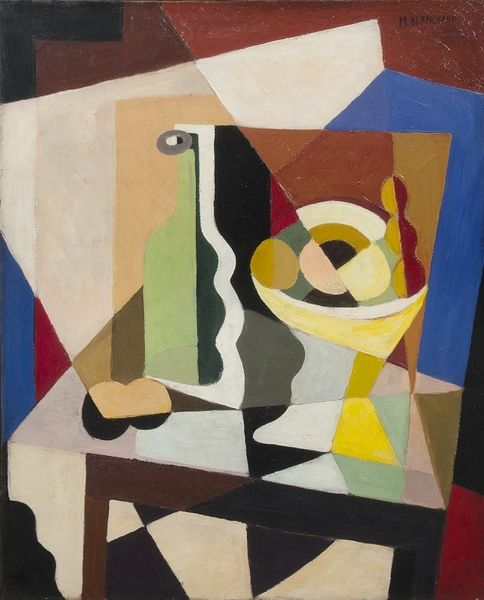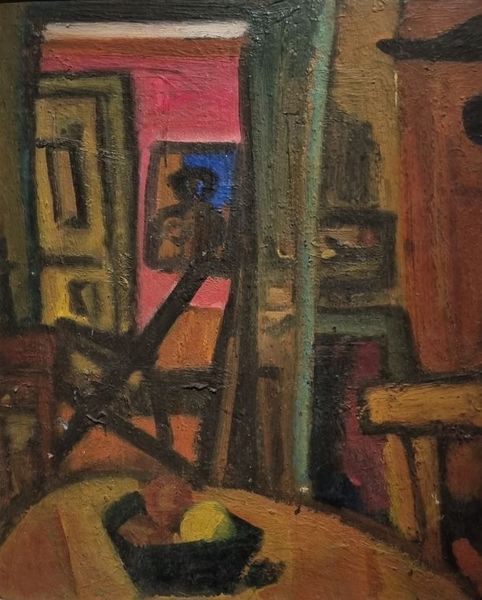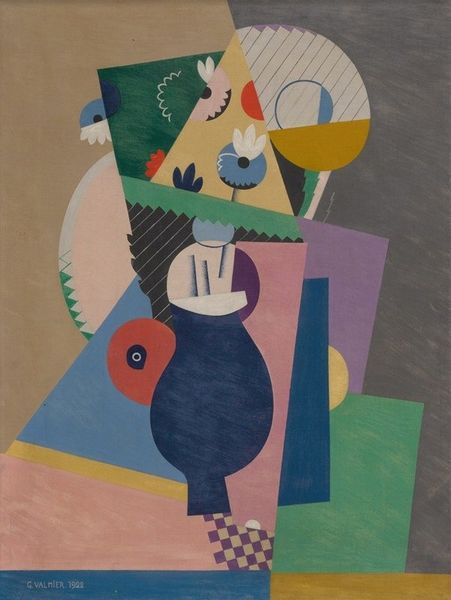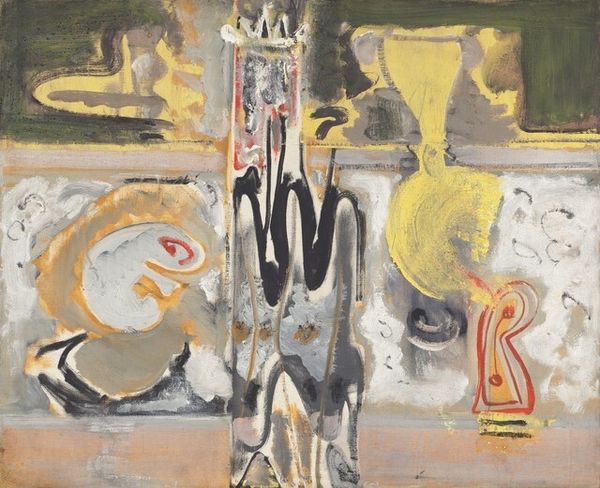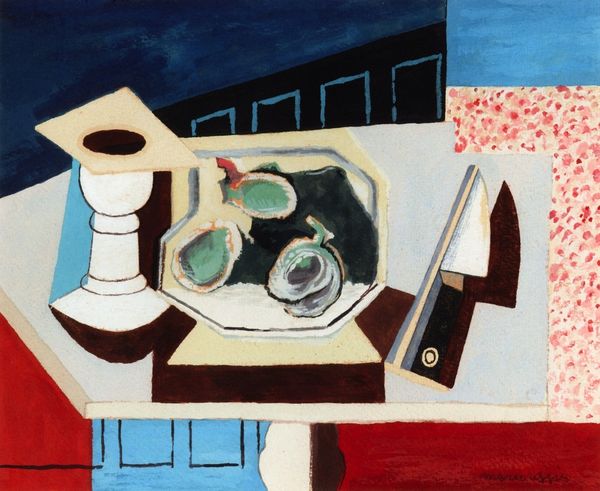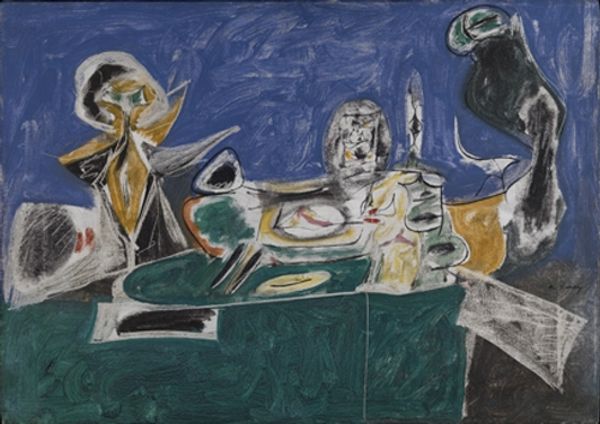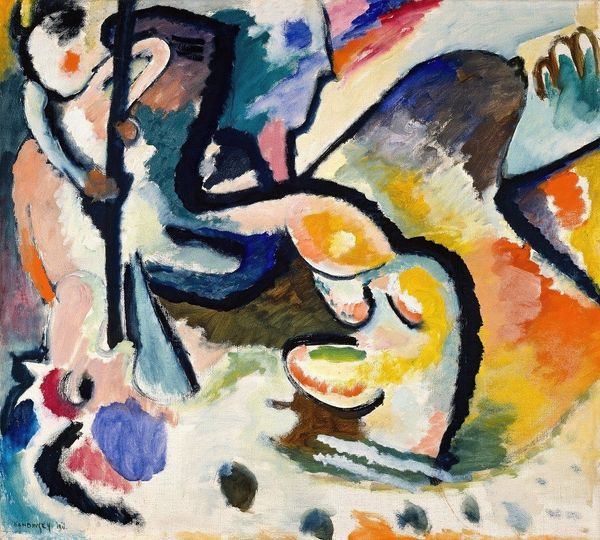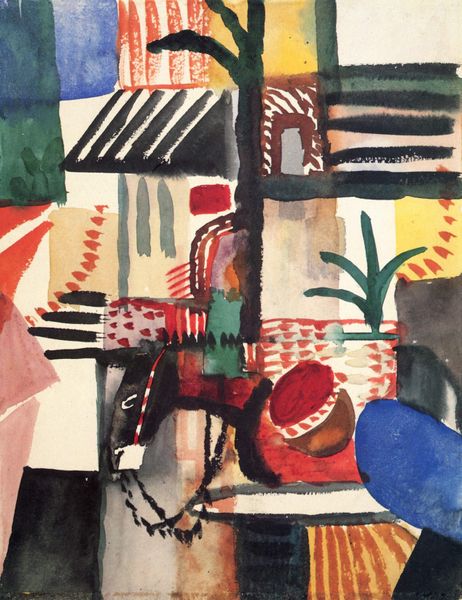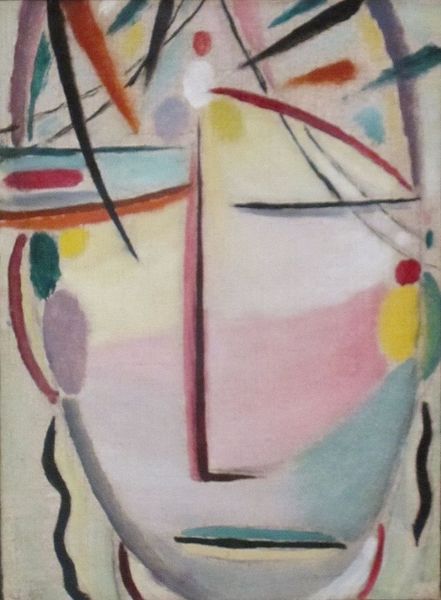
Copyright: Public domain US
Curator: Looking at "Still Life with Gourds," created in 1916 by Henri Matisse, I'm immediately struck by how boldly the color and form are used to almost flatten the scene. The oil paint application is quite evident, too. What are your initial impressions? Editor: There's a wonderful tension in how familiar still life objects are rendered in such an abstract manner. The simplified shapes, especially the woman’s profile in the background, are surprisingly haunting against the domestic setup. It has the effect of monumentalizing everyday life. Curator: Absolutely, the way he flattens perspective highlights the painting's construction. Think of how Matisse challenges traditional high art subjects like portraits and elevates the commonplace through material, transforming the familiar into a playground of shapes and color. Editor: This approach fits into a larger story, reflecting the shift in early 20th century European art towards a focus on pure visual experience over faithful representation. I also find myself thinking about the broader context of this work within the collections that preserve and showcase pieces like this. The painting would’ve faced considerable backlash initially for challenging conservative institutions like the Parisian Salon. Curator: Considering the Fauvist label often associated with Matisse, it’s key to reflect on how groundbreaking his brushwork was. Its expressiveness conveys emotion and the sensual experience of color. How do you view its long term significance in painting conventions? Editor: The piece’s institutional significance is immense, it really broadened art beyond realistic representation to embrace subjective expression, while altering established notions of what constituted worthy subject matter. Also it gives audiences the power to rethink conventional perspectives of art's very function within our cultural domain. Curator: Yes, this piece stands as testament to an artistic liberation! It's intriguing to contemplate the artist's choices on the painting's creation, while realizing it has gained such prominence, shaping discussions around representation. Editor: Indeed, it speaks volumes about the complex dialogue between individual vision and society’s evolving perception, shifting not only painting conventions but artistic value itself.
Comments
No comments
Be the first to comment and join the conversation on the ultimate creative platform.
